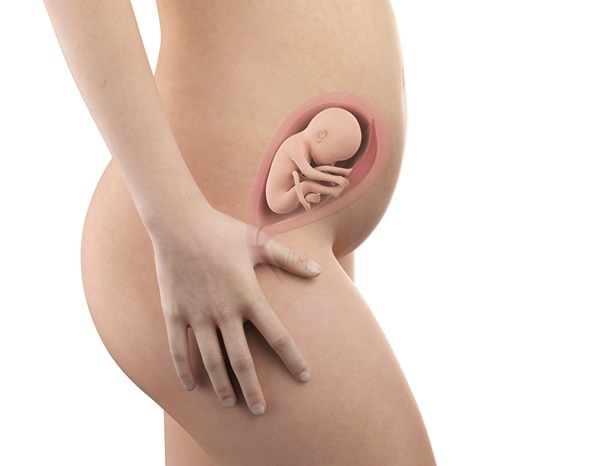Pregnancy: 21 – 24 weeks

Week 21
By the 21st week of pregnancy, the baby weighs about 400 grams and is poised to gain more weight. At this stage, the baby weighs more than the placenta (which had previously weighed more than the baby).
From this point onwards, the placenta will continue to grow throughout the pregnancy, although not as quickly as the baby grows.
The baby becomes more active and also develops a sleep–wake pattern that may be different to the mother’s. When the mother is trying to sleep, the baby may be wide awake and make numerous movements.
The lungs are not yet fully functional but the baby starts to practice breathing movements. In the meantime, all the oxygen the baby needs is provided by the placenta and will continue to be until birth.
Week 22
At 22 weeks, the baby is completely covered in a fine hair referred to as lanugo, which helps protect the baby’s delicate skin. The lanugo helps to hold a greasy film called the vernix caseosa in place, which coats the baby’s body to protect it from the abrasions and hardenings that can occur on exposure to amniotic fluid.
By this stage the baby measures around 190mm in length and weighs about 1 pound or 460 grams.

Week 23
By the 23rd week of pregnancy, the baby’s skin is more translucent than it has previously been and has started to turn a pinkish red color. The skin is wrinkled but will start to fill out as the baby stores more fat.
The baby’s lungs are developing in preparation for the first breath of air and the body and head are now proportional to each other.
The baby starts to develop rapid eye movements. In male babies, the testes now descend from the abdomen and baby girls now have their womb and ovaries in place, along with an egg supply.
With very intensive medical attention, some babies may survive being born at this stage.
Week 24
At twenty-four weeks into pregnancy, the baby measures around 210mm and weighs about 630 grams. The skin is still very translucent, with the vasculature clearly visible. The baby has a regular sleep–wake pattern and hair is present on the head.
A baby born this early does have a small chance of survival, although the majority do not survive because their lungs and other major organs are too under-developed.
The intensive medical care provided nowadays in baby units has led to an increased lifelihood of babies surviving when they are born during this week.
However, there is a significantly increased risk that babies born this premature may develop a disability.
The mother’s body
Between the 21st and 24th week of pregnancy, the womb will enlarge more quickly and the mother will begin to look obviously pregnant. The mother’s appetite may increase, but she should try to maintain a well balanced, sensible diet. Some mothers develop stretch marks around this stage, which appear on the thighs, breast and abdomen.

They are initially red in color and then fade and eventually become grey/silver. Small amounts of milk may also start to leak from the breasts. Other common problems include piles, backache and heartburn.
Sources
- www.mayoclinic.org/…/art-20046151?pg=2
- www.bbc.co.uk/…/week.shtml?due=%28none%29&week=23
- www.nhs.uk/…/pregnancy-weeks-21-22-23-24.aspx
Further Reading
- All Pregnancy Content
- Early Signs of Pregnancy
- Is it Safe to Exercise During Pregnancy?
- Pregnancy: 0-8 weeks
- Pregnancy: 9 – 12 weeks
Last Updated: Feb 27, 2019

Written by
Sally Robertson
Sally has a Bachelor's Degree in Biomedical Sciences (B.Sc.). She is a specialist in reviewing and summarising the latest findings across all areas of medicine covered in major, high-impact, world-leading international medical journals, international press conferences and bulletins from governmental agencies and regulatory bodies. At News-Medical, Sally generates daily news features, life science articles and interview coverage.
Source: Read Full Article